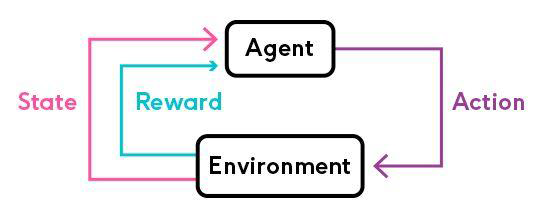
Reinforcement-deep learning is a subfield in machine learning that combines reinforcement and deep-learning techniques. It addresses the issue of a computational agent learning how to make decisions using trial and error. Deep reinforcement learning will be a rapidly growing field. However there are some obstacles that need to be overcome before it can be deployed. We will be exploring the applications and methods of this type learning in this article. The next section will discuss the current state of the art in robotics.
Goal-directed computational approach
Goal-directed computational approaches to reinforcement deeplearning are based on reinforcement learning. This is a popular paradigm for optimizing Markov decision processes. Reinforcement learning is where agents interact with their environment in order to learn how to map situations to actions. This maximizes expected cumulative rewards. This type of optimization is difficult for complex Markov decision process. A recent goal-directed computational approach combines deep convolutional neural networks with Q-learning. Combining both methods results in increased uncertainty, which can be useful in predicting behavior in realtime.
Agents learn how to interact in a stochastic environment. They can also adjust their agent policy parameters based on their observations. Goal-directed computational methods allow agents to change their environment as they go. This allows them the ability to choose the most profitable policy for long-term reward maximization. You can use a variety of models to model such agents. To train these algorithms, Reinforcement Learning software is available. These models cannot replace human decision-making.

Methods for reinforcement learning
The idea of reinforcement deep learning is that agents can be mimicked by their environment. Reinforcement learning's objective is to help the agent achieve a predetermined goal. The agent then learns which action is most rewarding from a given set of data instances. The agent then uses this information in order to improve its prediction. In the next section you will learn more about reinforcement learning and how it works.
There are many methods that can be used to reinforce learning in the research community. The most common method for reinforcement learning is policy iteration. This method computes the sequences of functions needed for an act, and eventually converges at the desired Q *. You can also use these methods in real-life situations. For more information on reinforcement learning, visit the repo. If you are interested in learning more about these methods, it is worth a visit.
Applications in robotics
Because of its ability to simplify manipulative tasks and improve robots' performance, reinforcement deep learning is becoming a popular application in robotics. We present how reinforcement deep-learning in robotics can simplify grasping tasks. This is done by combining large scale distributed optimization and QT Opt, a deep version of Q-Learning. This approach can be offline-trained and applied to real robots in order to help them complete tasks.
Traditional manipulation algorithms are complex to implement since they require an entire model of the system. Imitative learning has the disadvantage that it is difficult to adapt to changing environments. Deep reinforcement learning is able to adapt to the environment well, and allows the robot to decide its own policy without requiring human supervision. This makes it an efficient choice for robot manipulators. Robot manipulation algorithms represent the best available options for robotics.

Barriers to deployment
Retraining a neural network with a new training data set is not as easy as it seems. Data scientists first need to identify the environment they wish to package. A gym, which is an API for reinforcement learning, is a common place to package a package. The environment is already set up for this task. Data scientists will need to combine other data sources with the data they have, including genomic and image analyses data.
The Internet of Things generates huge amounts of data. This is because it is a network of billions of connected objects that can communicate with each other and humans. These devices are able to detect human activities, environmental information and geo-information. Because of the massive amount of data, it is imperative that we can rapidly process the data. Fortunately, there are lightweight techniques that can be trained on resources-constrained devices and applications.
FAQ
Are there risks associated with AI use?
Of course. There will always exist. AI poses a significant threat for society as a whole, according to experts. Others argue that AI has many benefits and is essential to improving quality of human life.
The biggest concern about AI is the potential for misuse. If AI becomes too powerful, it could lead to dangerous outcomes. This includes robot dictators and autonomous weapons.
AI could also take over jobs. Many fear that robots could replace the workforce. Some people believe artificial intelligence could allow workers to be more focused on their jobs.
Some economists even predict that automation will lead to higher productivity and lower unemployment.
Is Alexa an artificial intelligence?
The answer is yes. But not quite yet.
Alexa is a cloud-based voice service developed by Amazon. It allows users to interact with devices using their voice.
The Echo smart speaker first introduced Alexa's technology. However, since then, other companies have used similar technologies to create their own versions of Alexa.
Some examples include Google Home (Apple's Siri), and Microsoft's Cortana.
What is the role of AI?
An algorithm is a set of instructions that tells a computer how to solve a problem. A sequence of steps can be used to express an algorithm. Each step has an execution date. The computer executes each step sequentially until all conditions meet. This continues until the final result has been achieved.
For example, suppose you want the square root for 5. One way to do this is to write down all numbers between 1 and 10 and calculate the square root of each number, then average them. You could instead use the following formula to write down:
sqrt(x) x^0.5
This will tell you to square the input then divide it twice and multiply it by 2.
This is how a computer works. It takes the input and divides it. Then, it multiplies that number by 0.5. Finally, it outputs its answer.
Statistics
- The company's AI team trained an image recognition model to 85 percent accuracy using billions of public Instagram photos tagged with hashtags. (builtin.com)
- In 2019, AI adoption among large companies increased by 47% compared to 2018, according to the latest Artificial IntelligenceIndex report. (marsner.com)
- In the first half of 2017, the company discovered and banned 300,000 terrorist-linked accounts, 95 percent of which were found by non-human, artificially intelligent machines. (builtin.com)
- By using BrainBox AI, commercial buildings can reduce total energy costs by 25% and improves occupant comfort by 60%. (analyticsinsight.net)
- According to the company's website, more than 800 financial firms use AlphaSense, including some Fortune 500 corporations. (builtin.com)
External Links
How To
How to set up Cortana Daily Briefing
Cortana in Windows 10 is a digital assistant. It's designed to quickly help users find the answers they need, keep them informed and get work done on their devices.
Setting up a daily briefing will help make your life easier by giving you useful information at any time. The information should include news, weather forecasts, sports scores, stock prices, traffic reports, reminders, etc. You can choose the information you wish and how often.
Win + I, then select Cortana to access Cortana. Click on "Settings", then select "Daily briefings", and scroll down until the option is available to enable or disable this feature.
If you have enabled the daily summary feature, here are some tips to personalize it.
1. Open Cortana.
2. Scroll down to the "My Day" section.
3. Click on the arrow next "Customize My Day."
4. Choose the type of information you would like to receive each day.
5. You can adjust the frequency of the updates.
6. Add or remove items to your list.
7. You can save the changes.
8. Close the app.